Having an abundance of water available for future challenges is meaningless without having reliable methods of water filtration for any of the water you’d use; as such I felt that it was important to research the topic of water filtration thoroughly and present my 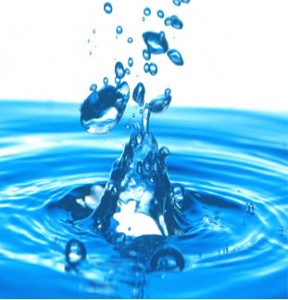 findings to you here. What I thought would be a standard week-long project turned into many months of work as I discovered that the water filtration industry is wrought with tricks, deception, and ignorance. Unfortunately, as a result of actual interviews with industry executives, I felt that in some instances the water filtration manufacturers actually prey on the fact that consumers aren’t educated in the science and the expression of that science in order to sell their products.
findings to you here. What I thought would be a standard week-long project turned into many months of work as I discovered that the water filtration industry is wrought with tricks, deception, and ignorance. Unfortunately, as a result of actual interviews with industry executives, I felt that in some instances the water filtration manufacturers actually prey on the fact that consumers aren’t educated in the science and the expression of that science in order to sell their products.
It seemed that the further I dug into the filtration claims, test results, and technology used by various companies, the more astounded I was with some of the standard practices that are rampant in the water filtration industry—especially given that there are several agencies and private entities that ostensibly rate the quality of such products. As such, my conclusion may sound a bit melodramatic when I say that” what a consumer doesn’t know may very well kill them”. But over-the-top or not, I make such a statement with all sincerity.
Water Filtration Purchasing Decision Helps
Perhaps after reading this article you’ll understand just how important it is that you go into your purchasing decisions for water filtration products with all of the facts in hand, as opposed to the smoke and mirrors that’s commonly used by most in this industry. Fortunately, there are a few good eggs in the water filtration industry who were willing to generously share their time and expertise with me so that you and I actually have a chance at selecting wisely for our water treatment and filtration needs. So, let’s go over the essentials we all need to consider when selecting the proper products for our water filtration solutions.
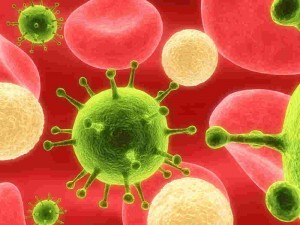 Just to make sure I address one foundational aspect of water filtration first, understand that there’s a big difference between water filtration and water treatment. Most systems are set up to first filter particles from the water and then to influence, transform, or inject something into the water to take care of harmful pathogens, bacteria, molds, fungi, etc.
Just to make sure I address one foundational aspect of water filtration first, understand that there’s a big difference between water filtration and water treatment. Most systems are set up to first filter particles from the water and then to influence, transform, or inject something into the water to take care of harmful pathogens, bacteria, molds, fungi, etc.
When it comes to filtration there are a lot of simple solutions that can be used to initially filter the water which would otherwise tax the water filtration investment unnecessarily. Coffee filters, cheesecloth, fine sieves, mesh materials, towels, and even jeans are suitable for the initial filtration that may be necessary to use in challenging times. When Hurricane Katrina reigned disaster, so much silt, rocks, metal particles and such were stirred into the water supply. The fact is that these kinds of things aren’t necessarily bad for you, but they sure are unappealing to our appetites and if allowed to enter more sophisticated portions of a water filtration system would unnecessarily clog it. So, I suggest that you consider having resources on hand that can lighten the load on your filtration devices.
The treatment phase of water is where the fun, misinformation, and deception comes into play in the water filtration industry because so much of it is based on chemistry, biology, and engineering that most of us avoided like the plague in school. *grin* In fact, there were several instances during my research that I recognized blatant attempts to confuse, mislead or distract the consumer based on 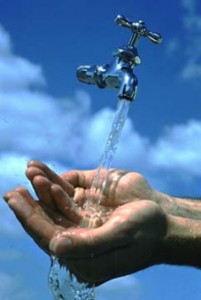 the inherent lack of understanding of the treatment phase– making your water safe to drink. As such the majority of this article will deal with that aspect of Water Preparedness.
the inherent lack of understanding of the treatment phase– making your water safe to drink. As such the majority of this article will deal with that aspect of Water Preparedness.
Let’s take a look at the following common claim used in the marketing of water filtration devices:
Removes or kills up to 99.99% of all bacteria
1) Test results need to identify the initial baseline of invaders before its results can be relied on.
It’s important to know how much bacteria was in the water before the testing/treatment/filtration occurred. Taking care of “99% of the bacteria” when there were only 100 in the water to begin with is no where near as impressive to me if there were 1,000,000 known bacteria in the water. But even in that scenario, 1 percent of 1 million is still plenty to get me or someone I care about seriously ill. I’ll go into greater detail on another aspect of this “claim” in Part II of this article.
I discovered that the majority of the Berkey advertisement does not take this into consideration. When I was challenging one of the well-known Berkey representatives with questions at a trade show, he kept falling back to the fact that their units clean out red food dye. Considering that I can see the red food dye with the naked eye, the magic and awe of such a feat is significantly less impressive to me now. And there’s a big difference to cleaning out a food grade substance and microscopic invaders that will make me sick.
 The AquaPail advertises its “Non-Detect” status of their tests on the presence of virus and bacteria but does so without providing any written information as to the original makeup of the test water. When it comes to testing water, the end results are only as good as the information that’s entered in the first place. Seychelle, Berkey, and other look-alike products have also begun using the “non-detect” verbiage recently without providing a baseline of original content.
The AquaPail advertises its “Non-Detect” status of their tests on the presence of virus and bacteria but does so without providing any written information as to the original makeup of the test water. When it comes to testing water, the end results are only as good as the information that’s entered in the first place. Seychelle, Berkey, and other look-alike products have also begun using the “non-detect” verbiage recently without providing a baseline of original content.
2) Avoid any water filtration unit which uses the term “up to” as a part of its marketing and technology content.
I don’t know about you but I certainly don’t want to play Russian Roulette with my water. When a company claims that it’s treatment or filtration unit kills or removes “up to 99.999% of all bacteria” that simply means that the unit CAN remove that much; not that it will do so every time. Well, if you’ve ever experienced the miserable recovery from a digestive illness, you know that it only takes one of the little parasite buggers to put you in compromised health, right? I don’t know about you, but I want to rely on something that can claim that I can expect those results or better every time I use their product.
3) The filtration and treatment tests must take into consideration the SIZE of the invaders they are attempting to eliminate.
Suppose the water filtration unit bragged about cleaning out 100% percent of all of the golf balls from your water. That’s great, except 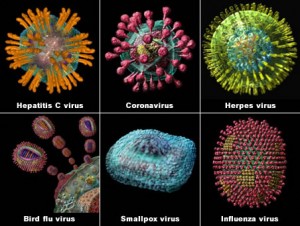 that you’re not afraid of a golf ball in your water, you’re concerned with something much smaller such as bacteria or viruses. There are standard testing requirements to measure for the presence of bacteria, viruses and the like, and in order for you to know whether or not you’re purchasing a good unit you need to know what those standards are. Viruses, for example, require FOUR nines when testing (99.99% per ml. of water) because only this measurement can assure you that you tested small enough for viruses. Whereas bacteria requires testing of SIX nines (99.9999%) because of the their size and the fact that it takes many more bacteria to get sick. Protozoan cysts require THREE nines (99.9%) in their testing in order for it to be meaningful.
that you’re not afraid of a golf ball in your water, you’re concerned with something much smaller such as bacteria or viruses. There are standard testing requirements to measure for the presence of bacteria, viruses and the like, and in order for you to know whether or not you’re purchasing a good unit you need to know what those standards are. Viruses, for example, require FOUR nines when testing (99.99% per ml. of water) because only this measurement can assure you that you tested small enough for viruses. Whereas bacteria requires testing of SIX nines (99.9999%) because of the their size and the fact that it takes many more bacteria to get sick. Protozoan cysts require THREE nines (99.9%) in their testing in order for it to be meaningful.
There’s one more consideration as to WHY 4 nines, 6 nines etc are required for certain invaders which I’ll cover in Part 2 of this article.
These “nines” are actually referred to in the industry as “logs”. When you see 99.99% that means the water was tested against “four logs.” There’s a newly released product out there called the AquaPail. It’s very promising on so many levels, but the owners seem a bit slow to comprehend and properly communicate the science behind it. For example, when I asked Dennis Clements, one of the owners 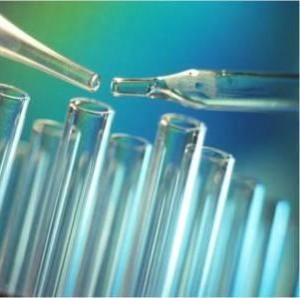 of the new AquaPail product why their test results only went down to 2 and 3 logs he informed me that “after 2 or 3 logs they didn’t need to test any further because they didn’t see anything, so why go to the bother and expense of testing down to 6 logs like everyone else?” Clearly, in light of the indisputable physics of bacteria and viruses, etc., Mr. Clements is missing some important expertise in the subject of water filtration with such a response. (Watch for Part II as I share with you the other key fallacy with such a statement.)
of the new AquaPail product why their test results only went down to 2 and 3 logs he informed me that “after 2 or 3 logs they didn’t need to test any further because they didn’t see anything, so why go to the bother and expense of testing down to 6 logs like everyone else?” Clearly, in light of the indisputable physics of bacteria and viruses, etc., Mr. Clements is missing some important expertise in the subject of water filtration with such a response. (Watch for Part II as I share with you the other key fallacy with such a statement.)
4) Sure it cleans the water, but how long do I have to wait?! It’s all about the contact time.
One of the brands that’s used by humanitarian groups all over the world is Seychelle. It makes grand claims on what it MIGHT remove from your water (they use the “up to” phrase) but it fails to readily reveal just how long water must be exposed to its technology in order to be safe. Iodine MUST have 48 hours of exposure time in order to properly impact the pathogenic invaders in water. Hopefully that rings logical to you all. After all, we all know that boiling water may be a great way to kill bad guys in the water, but we also know that it takes longer than 50 seconds to do so, right?
Chlorine dioxide requires 30 minutes of contact time. My concern is heightened when I think of the Seychelle “straw” water filtration devices. The salesperson who sold me the virtues of this product proclaimed that I could use it to drink water out of a puddle in the  dredges of South Africa. Clearly, that’s not the case unless I want to hold that water in the straw for hours before consuming it. *sigh* Since exposure time isn’t readily available on most manufacturer’s websites or print media, the best thing to do to protect yourself is to contact the company directly for answers or use the standard rules of thumb for necessary exposure times associated with particular methods such as charcoal, chlorine, iodine, etc.
dredges of South Africa. Clearly, that’s not the case unless I want to hold that water in the straw for hours before consuming it. *sigh* Since exposure time isn’t readily available on most manufacturer’s websites or print media, the best thing to do to protect yourself is to contact the company directly for answers or use the standard rules of thumb for necessary exposure times associated with particular methods such as charcoal, chlorine, iodine, etc.
There’s LOTS more to address on this topic and yet this article is already broaching 3 pages, so I’ll continue the rest of this in Part II, including identifying brands that I think are great AND provide the proper information, as well as brands that I think are great for specific purposes, which might not yet have their public information up to snuff. The brands which I’ve mentioned in this article so far are not to dissuade you from using or purchasing them, rather I’ll outline what you need to know about them PRIOR to relying on them for specific scenarios so that when you do use them for your water needs, you do so well informed so that you can mitigate any potential problems.
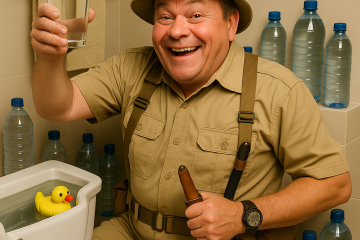
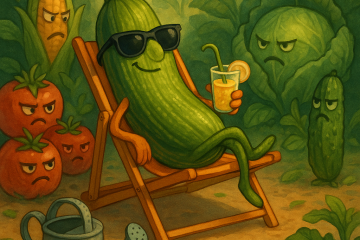

26 Comments
Stephanie · January 11, 2012 at 12:57 pm
Excellent, thanks for all the hard work you put into your research for the blog!
Megan · January 11, 2012 at 9:26 pm
Thanks for this, though it is still clear as mud. I had a lot of the same questions. I just got some of the Seychelle water bottles for Christmas presents off the LDS website and had hoped that the literature that came with them would clear up some of my questions, but it didn’t. Thanks for your work. I know I appreciate it.
james peless · January 11, 2012 at 10:22 pm
Good article….waiting for part ll.
Janice Seigler · January 11, 2012 at 10:28 pm
Thank you so very much for this information! I appreciate it tremendously!
AutumnGal · January 12, 2012 at 12:20 am
Kellene you are one very special lady and your info is always so timely!
We were discussing the water filteration topic with our adult son this past week end and I was feeling a bit put out at myself that water is one of the weakest areas in our prepardness. While I’ve look at units online the info left a lot to be desired and I quickly realized I don’t even know what it is I need TO know… That is scary!
Bless your heart, this is one time I’m sure glad we’ve waited to make such a major and life determining purchase! 🙂 Looking forward to Part 2 and if need be, part 3 too! 🙂 Thanks SO much!
Renee · January 12, 2012 at 1:41 am
Kellene, I know why you ARE & will be a survivor. Because you have that bulldog capability you dig in & grab on to something & don’t let go till you are completely satisfied & all the questions have been answered. Persevere & conquer. My hats are off to you; hats..you know we all wear many hats.
Much Oblige
Dennis · January 12, 2012 at 2:22 am
THANKS FOR DIGGING DEEPLY INTO THIS SUBJECT, IT IS ONE OF GREAT NECESSITYFOR ALL “PREPPERS” TO UNDERSTAND WELL! I AM LOOKING FORWARD TO PART 2! I TOO AM ONE WHO APPRECUATES UR HARD WORK OF DIGGING THROUGH THE MANY PAGES OF H20 INFORMATION. PLEASE KEEP UP THE GOOD WORK!
Donnella · January 12, 2012 at 4:13 am
Thanks for this timely research, Kellene. I’ve been using the Berkey for several years and am anxious to learn of your conclusions prior to purchasing new filters.
buni · January 12, 2012 at 7:38 pm
Oh, how wonderful to see this, we were just thinking of buy a Berkey, hurry up and give us part two, and thanks so much for this timely info…buni
Tyson · January 13, 2012 at 1:37 pm
I was planning to buy a Berkey too…can’t wait to get your thoughts. Thanks!!!
mom · January 14, 2012 at 11:38 pm
I just packaged 3 lbs of hypochlorite in glass jars with ground glass stoppers. My understanding was if you treat water with bleach and then filter it thru the Berkey, it was golden. (ah, but I know how you feel about gold!)
Can’t wait to see part two.
J · January 16, 2012 at 6:35 am
Where does water pasteurization fit into the picture? I was of the understanding a rolling boil for 20 minutes was a waste of fuel since you supposedly could heat the water up to pasteurizing temps (less than a boil, forget the exact temp though) and be good. It is the same process that happens with milk and other products.
Kellene · January 16, 2012 at 9:48 am
Water pasteurization is a treatment phase of creating potable water. I’d invest in some WAPIs.Those are great indicators that tell you when the water has been fully pasteurized. It’s “idiot proof” so it’s good for me. 🙂
Beagle Lover · February 16, 2012 at 5:38 am
Aqua Pro????
Marie S · February 24, 2012 at 7:07 am
Kellene – you and anyone interested in the best water purifier should check out the lifesaver bottles – developed fairly recently by a scientist who saw the craziness of shipping bottled water into areas surrounded by water. Check out this independent review of the product.
http://www.woodsmonkey.com/index.php?option=com_content&view=article&id=118:a-true-life-saver-really&catid=76:water-purifiers-and-filters&Itemid=90
I have no connection – and have just been doing research on the best product to get for emergencies.
dreamcatcher_ga · February 24, 2012 at 2:58 pm
This is such a timely topic. Only yesterday I was checking into water systems. Thank you for all your hard work. I’m excitedly waiting for part 2.
Amanda · February 26, 2012 at 6:50 pm
Excellent article. Thank you for all of the research and hard work. I look foward to part II.
Ian Skelley · February 19, 2013 at 12:31 pm
Did part 2 ever come out?…If so, could someone send me the link.
Thanks.
Kellene Bishop · February 19, 2013 at 10:34 pm
This is part 2. I think you’re looking for a part 3, and it wasn’t finished yet because of trying to coordinate interview schedules with the two experts that I need to interview for the article to make sure it’s 100% on the spot. Life is what happens when you’re making other plans though, right? 🙂
Dave · March 11, 2013 at 2:19 pm
This is part II? You’d mentioned that you’d continue the rest of this, including identifying brands that you think are great. I’d really like to see that. Thanks and great article btw!
FairWater Paul van Beers · April 17, 2013 at 7:09 am
Thanks for this clear overview. Awareness needs facts like this. Water quality is the next step after availability is secured. In Africa though still mainly struggling with availability, quality becomes more and more an issue as well, especially for the poor.
We found in our FairWater projects that cost is still a major factor related to water quality. Can you also include some more cost aspects in the quality issue discussion?
Thanks!
Sarah · June 1, 2013 at 1:56 am
Kellene,
So…Berkey or no Berkey? Need to know this ASAP as we were about to purchase one.
Kellene Bishop · June 1, 2013 at 4:38 am
Berkey BUT with the understanding that it will only do a fraction of the kind of water filtration and treatment that you will need. You cannot expect to get out all of the gallons that they advertise with their filters. You’ll have bacteria and mold and spores build up LONG before that.
Zoë · July 2, 2014 at 5:32 pm
Thank you SOOOO much for
Thank you SOOOO much for writing this! I am going on a trip to a third world country soon and I’ve been looking at lots of water filters, and I started getting suspicious of their claims. I’m so glad I found your article! Alas, critical thinking saves our lives.
Sam Jones · November 29, 2015 at 2:48 am
Great points Kellene! Our
Great points Kellene! Our planet might be 70% water but we only a little percentage of it is actually safe drinking water. So adapting to water filtration systems is necessary. Will be reading the next part. Cheers for your fantastic articles!
V.C.Blackwell · April 2, 2017 at 3:51 am
I love learning! I am a
I love learning! I am a retired career educator, and feel we should be preparing, but no one in my home is in agreement. Loved your Phase I, and am looking forward to as many more, as you have time to prepare. Thank you so much, Kellene, and God Bless you.
Comments are closed.